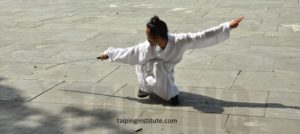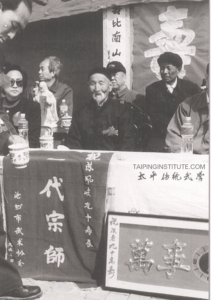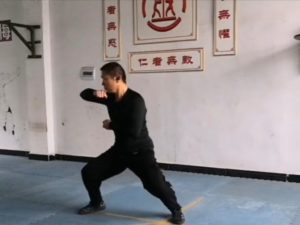Contrary to the portrayal of martial arts in films and novels, where some how by meditating over a few animals, a terrific martial art was created and passed down. The authentic combative martial arts of China are derived from the practical experiences of its Imperial military, Warlord military, Rebels and later security logistics bureau’s. Often there are stories of individuals escaping the government by disguising themselves as monks or changing identities and hiding in the mountains but in general their skills were developed, proven and tested on the battlefield or in actual altercations. Given that is the case what is it of these martial arts ? what were the most famous or popular at the time ? and under what conditions were they formulated, developed and passed on.
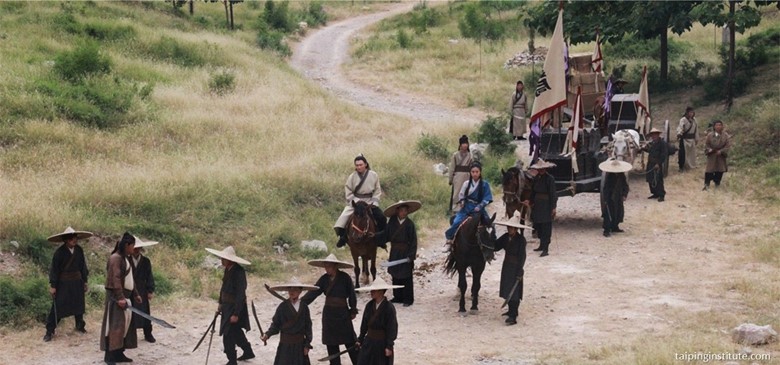
REBELLIONS
The history of rebellion is a long and persevering one. To those that understand China’s history they would know that throughout much of that long time, it was ruled by foreign nations (e.g. Yuan Dynasty by the Mongols) or constantly defending itself from such (e.g. Song Dynasty became the Southern Song by the Jurchens). In addition, there were many minorities in China (today formally 52) that through time instigated there own efforts for independence or conquest of land. Further as a result of some dynastic periods with less than amiable social economic environments it led to a country that would be in constantly rebellion.
Since over 2,000 years ago, rebellions played a major role in the changes of power, government and the country. In the Eastern Han Dynasty, the Yellow Turban Rebellion (Taiping Rebellion) in the Shandong area and the Five Pecks of Rice Rebellion in Sichuan area were the backdrop to what became the rise of Cao Cao and the 3 Kingdoms period. The Tang Dynasty was substantially affected by the An Lushan Rebellion. The Yuan Dynasty came down from the Red Turban Rebellion (White Lotus) where the to be Emperor of the Ming Dynasty established his position from. The Ming dynasty fell on the back of Li Zicheng’s rebellion leading to the formation of the Manchu Qing dynasty. Throughout the Qing dynasty endless rebellions prevailed from the White Lotus Rebellion (1796-1804), the Bagua Uprising (1813), the Taiping Rebellion (1851-1864) , Small Sword Society (1853-1855), Red Turban Tiandihui Rebellion (1854-1856), the Nian Rebellion (1851-1868), the Boxer Rebellon (1899-1901),Red Spear Uprising (1928-1929) and many other minor ones. In fact the Xinhai Revolution which was later to become the fall of the Qing and founding of the republic led by Sun Yat-sen, was founded on the back of rebellious groups (some of those later became the triads).
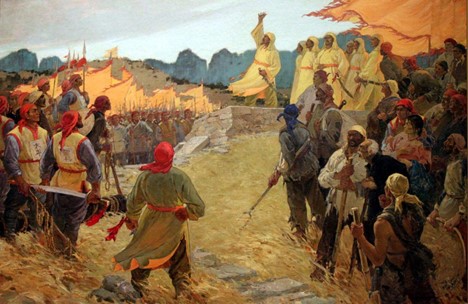
Throughout all those rebellions, martial arts were continuously evolving and developing, from the ability to create peasant armies by quick direct and effective movements in the some of the Southern areas, to the adoption and recruitment of known martial arts experts into the various groups. Rebellions had a substantial contribution to the authentic martial arts. They were recruitment, training and more importantly well tested battlefields. Although many martial arts are associated with these we will list some of the key ones accordingly.
- An Lushan Rebellion – Cha Hua Men (查滑门) and associated styles including Tantui, Cha Quan, Hua Quan.
- Yi He Tuan – Meihua Zhuang (梅花桩), Hong Quan (洪拳)
- White Lotus Rebellion – Wen Sheng Quan (文圣拳)
- Bagua Uprising – Bagua Quan (Bagua Quan 八卦拳, Yangjia Quan (杨家拳), Chuo Jiao (戳脚) Bafanquan (八翻拳) )
- Heavenly Order/Bagua Uprising – Chuo Jiao (戳脚) Bafanquan (八翻拳) Meihuazhuang (梅花桩)
- Hong Qiang Hui (Red Spear Society) – Da Hong Quan (大洪拳)
- Taiping Rebellion – Chuo Jiao (戳脚) in the Jiangnan (Nanjing , Zhejiang, Jiangxi) and Choy Li Fut (蔡李佛) in Lingnan (Guangdong).
- Tian Di Hui – Taizu Quan (太祖拳) in Minnan, Hong Quan (洪拳) in the Lingnan regions
By no means complete, this is just as examples of the various styles associated (ie. a number of practitioners had joined or were leaders in those rebellions). What also should be understood is that when practitioners fought alongside one another they would mutually exchange skills, test them though combat and enhance their martial arts. It should also be noted that weaponry often prevailed over boxing methods, and thus it is common to find same methods of weapons across multiple styles/systems.
ARMED SECURITY LOGISTICS BUREAUS
The armed security business became an important part of commercial trade in China. Without armed escort’s protection, a lot of Merchants could not run their business smoothly to transport value commodities like medicines, precious metals (gold) and valuable articles from one place to another. These businesses rose to prominence during the Qing Dynasty. To be successful in the armed security business (Biao Ju), the companies needed to hire the best Guards (Biao Shi), which were selected typically from the most competent martial arts exponents at the time but mostly they were family members and martial brothers from the same style or system. The bureaus became a training ground, for exchange and development of the specific martial arts as well.
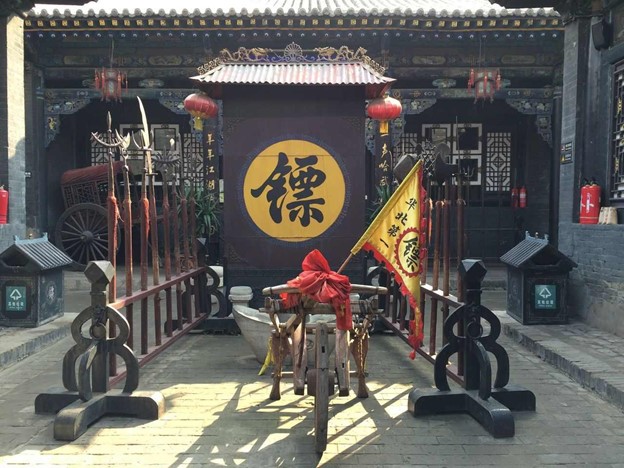
Whilst there were many such security logistics bureaus, there were a few outstanding and held in high esteem. Many of the trade routes throughout China had established different centres of excellence, from the housing of valuables in Pingyao, the need to cross through the Cangzhou Canals and the financial institutions in Tianjin or the government centre in Beijing. So what were the top Bureaus and what martial arts did they practice:
- Cheng Xing Biaoju (成兴镖局) – Da Liuhe Men (大六合门 李冠铭)
- Fu Yuan Biaoju (福源镖局) – Chuojiao Men (戳腳門 刘观澜)
- Yuan Shun Biaoju (源顺镖局) – Da Liuhe Men (大六合门 王正谊)
- Longsheng Biaoju (龙胜镖局) – Da Liuhe Men (大六合门 佟忠义)
- Chang Shun Biaoju (长顺镖局) – Da Liuhe Men (六合门 石金省)
- Yong Shun Biaoju (永顺镖局) – Bafan Men (八翻門 王枝国)
- Desheng Biaoju (德胜镖局) – Bafan Men (八翻門 李德川)
- Zhenyuan Biaoju (振源镖局) – Chuojiao Men (戳腳門 赵老灿)
- Wansheng Biaoju (万胜镖局) – Bafan Men (八翻門 石老昆 赵老灿)
- Fuyuan Biaoju (府源镖局) – Yanqing Fanzi (燕青翻子 马家少林拳 马涌泉)
- Yongxing Biaoju (永兴镖局) – Bafan Men (八翻門 )
- Tianshun Biaoju (天顺镖局) – Shaolin Quan 杨氏少林拳 杨秀三
- Yiyuan Biaoju (义源镖局) – Yanqing Men (燕青门 郭金镛 王延登)
- Wantong Biaoju (万通镖局) – Xingyi Quan (形意拳 李存义)
- Peicheng Biaoju (沛城镖局) – Xingyi Quan (形意拳 李存义 尚云祥)
- Qinglong Biaoju (庆龙镖局) – Yanqing Fanzi (燕青翻子拳 胜芳长拳门 梅花长拳 )
- Jinyuan Biaoju (锦源镖局) – Cha Hua Quan (查拳 李恩聚成立 華拳 蔡桂勤鏢師)
- San He Biaoju (三合镖局) – Gongyi Quan (公义拳 安晋元)
- Hui You Biaoju (会友镖局) – San Huang Pao Chui (三皇炮捶 宋迈伦)
- Fushun Biaoju (福顺镖局) – Praying Mantis Boxing (螳螂拳 杨德符)
- Guangsheng Biaoju (广盛镖局) – Dai Xinyi Quan (戴氏心意拳 戴二闾)
- Yu Yong Biaoju (玉永镖局 Mianquan (绵掌 张德茂 from Cangzhou) later Suzhou branch became Changlong Biaoju (昌隆镖局)
- Changshun Biaoju (常顺镖局) – Tang Quan (唐拳门 李天河)
- Desheng Biaoju (和胜镖局) – Xingyi Quan (形意拳 张树德)
- Xinglong Biaoju (兴隆镖局) – Xingyi Quan (形意拳 张黑五)
- Xiejia Biaoju (谢家镖局) – Cha Hua Quan (查拳 马凤山) Ma was from Jinyuan Biaoju (锦源镖局) started branch and when he joined the YiheTuan, Xie Yutian 谢玉田 Changed name to 谢家镖局.
Of those, the Cheng Xing Biaoju (成兴镖局) in Cangzhou became famous for the saying ‘Flags should not be raised when crossing Cangzhou’. Li Guanming and his team of Da Liuhequan (大六合门 Greater Six Harmonies Boxing) were renowned and were not to be crossed with. As a result, Li Guanming established one of the most comprehensive martial arts systems that absorbed much from the styles in the area including Liuhe, Tantui, Guangdong, Hong and Chahua boxing. Da Liuhe Men Wang Zibin (better known as Big Sword Wang, Da Dao Wang Wu) was a disciple of Li Guanming and member of the Cheng Xing Biaoju, established his own Security Bureau in Beijing called Yuan Shun Biaoju. Tong Zhongyi also from the Cangzhou Da Liuhequan (大六合门 Greater Six Harmonies Boxing) established the Longsheng Biaoju (龙胜镖局).
In addition to the establishment of the various bureaus, many of the martial arts experts were just employees of the Bureau.

